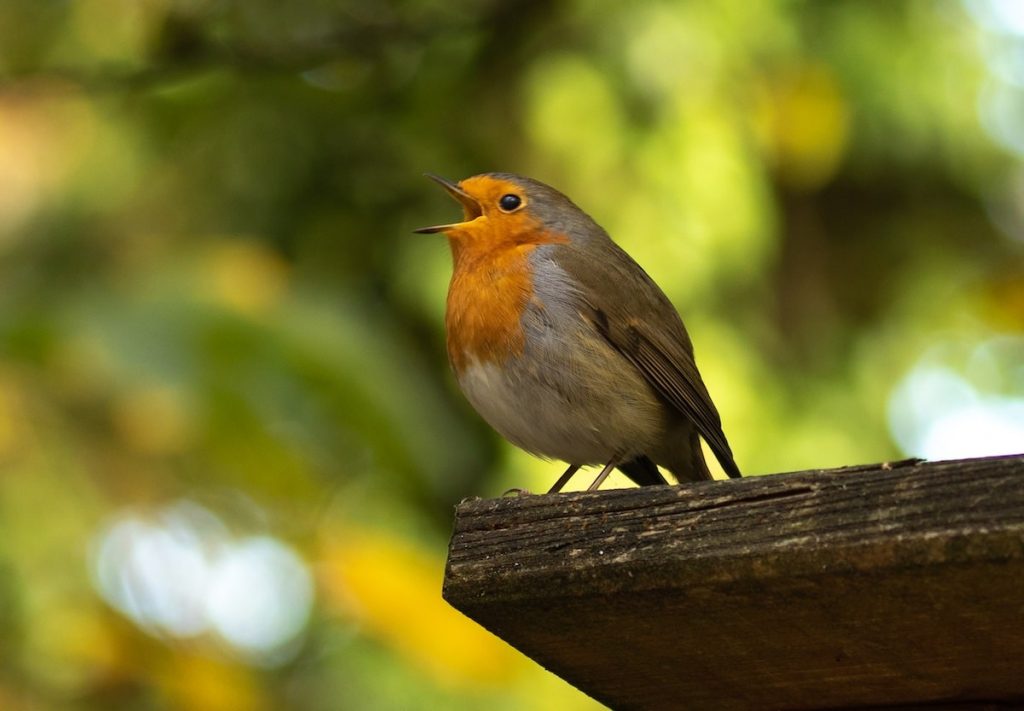
The UK is home to a vast array of bird species, making it an excellent destination for birdwatching enthusiasts. However, identifying these birds can be quite challenging, particularly when they are hidden from view. One of the most useful tools for identifying birds is their distinctive songs and calls. By learning to identify these sounds, birdwatchers can more easily locate and identify the birds they are observing. In this article, we will explore how to identify birds by ear in the UK and the rest of Europe.
The first step in identifying birds by ear is to learn the songs and calls of the most common bird species in your area. There are several resources available to help you with this, including field guides, online resources, and birding apps.
A good place to start is by familiarising yourself with the songs and calls of the most common garden birds, such as robins, blackbirds, and blue tits. These birds are often heard singing and calling in gardens and parks, making them an excellent starting point for beginners.
Once you have familiarised yourself with the common bird songs and calls in your area, the next step is to listen carefully when you are out birdwatching. It is essential to listen to the birds carefully and to try and pick out individual songs and calls.
Bird songs and calls can be challenging to hear, particularly in noisy environments such as busy roads or urban areas. To help overcome this, it is a good idea to visit quieter areas, such as nature reserves or parks, where you can hear the birds more clearly.
While identifying birds by ear is an essential skill for birdwatchers, it is often helpful to look for visual cues as well. Many bird species have distinctive plumage or markings that can help identify them.
For example, the great spotted woodpecker has distinctive black and white plumage, a bright red patch on the back of its head, and a characteristic drumming sound that can be heard from a distance. By learning to identify these visual and auditory cues, you can more easily identify bird species when out birdwatching.
Advances in technology have made it easier than ever to identify birds by ear. There are several birding apps available that can help identify bird songs and calls, even for beginner birdwatchers.
One popular app is the Smart Bird ID app, which uses artificial intelligence to identify bird species based on their songs and calls. Simply record the bird’s song or call using the app, and it will provide a list of potential bird species that match the recording.
As with any skill, identifying birds by ear takes practice. The more you listen to birds and familiarise yourself with their songs and calls, the easier it will become to identify them.
It is a good idea to practice in different environments, such as forests, parks, and wetlands, to become familiar with the different bird species that live in these areas.
Some bird species have particularly distinctive songs and calls, making them easier to identify. Here are some tips for identifying a few of the most common bird species in England by ear:
Robin: The robin’s song is a melodious series of high-pitched notes, which can often be heard throughout the year. The robin’s call is a sharp “tick-tick” or “tic-tic-tic” sound.
Blackbird: The blackbird’s song is a beautiful, flute-like melody that is often heard in gardens and parks. The blackbird’s call is a sharp “chink” or “tuk-tuk” sound.
Blue Tit: The blue tit’s song is a series of high-pitched notes, similar to the robin’s song. The blue tit’s call is a high-pitched “tsee-tsee-tsee” or “see-see-see” sound.
Great Tit: The great tit’s song is a loud, clear, and melodic “tea-cher, tea-cher, tea-cher” sound. The great tit’s call is a sharp “tik-tik-tik” or “chick-a-dee-dee-dee” sound.
Chaffinch: The chaffinch’s song is a beautiful, complex melody that rises and falls in pitch. The chaffinch’s call is a sharp “pink” or “pik-pik” sound.
Common Cuckoo: The common cuckoo’s song is a distinctive “cuckoo-cuckoo” sound, with the second note usually being higher than the first. The common cuckoo’s call is a distinctive “cuck-oo” sound, with the second note being higher than the first.
Identifying birds by ear can be a challenging but rewarding experience for birdwatching enthusiasts. By familiarising yourself with the common bird songs and calls in your area, listening carefully, looking for visual cues, using technology, and practicing, you can become a skilled birdwatcher and identify the different bird species in England with ease. Remember to take your time, be patient, and enjoy the beautiful sounds of nature as you explore the world of birdwatching.
